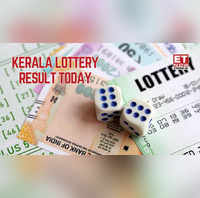Infra
Toronto police cracking down on ‘blocking the box’ at intersections with new $450 fines | CBC News

Drivers who block intersections as lights turn red, often referred to as “blocking the box,” will face increased fines as Toronto police say they’re ramping up enforcement after council greenlit new measures to fight gridlock on city’s streets.
Toronto police’s Traffic Services Unit says it’s blitzing major city intersections and slapping offenders with $450 fines — a significant increase from the previous $90 amount.
The fine for an improper stop at an intersection has also been raised for community safety zones, from $120 to $500.
“When you’ve got cars that are blocking the box and they’re halfway through a turn or in an intersection, you’re now pushing people out into the intersection,” Supt. Matt Moyer told CBC Radio’s Metro Morning after the blitz was announced last week.
“You’re pushing people out of bike lanes. You’re jeopardizing the safety of other drivers on the road. It’s all bad decision-making,” he said.
City council greenlit the higher fines in September as part of its plan to manage traffic congestion, as Toronto grapples with notoriously bad traffic, which has been called a crisis and some of the worst in North America.
While some drivers think the hefty fines will improve the situation, others say more education and warnings should be on the table, too.
A step in the right direction: experts
Matti Siemiatycki, the director of the Infrastructure Institute at the University of Toronto, said like other Torontonians on the road, he is affected by the traffic problems.
“It frustrates me when I’m driving, it slows my trips on the streetcar to a crawl, and it makes me concerned about safety when I’m biking or walking on busy streets,” he said.
Issuing more fines is a step in the right direction, he said. While it may help ease gridlock on roads, it won’t help with congestion, he said.
“We are being strangled by gridlock and congestion in Toronto,” Siemiatycki said, “congestion because there’s too many cars and not enough space, and gridlock because in many instances people are not following the rules.”
He said more drivers should consider taking public transit, while the city should consider adding road tolls to minimize congestion. That would require approval from the province.
Teresa Di Felice, assistant vice-president of government relations for the Canadian Automobile Association, said drivers should plan their trips ahead of time to avoid frustration, which she says can lead to cars getting stuck in intersections.
According to an October 2023 city report, the presence of traffic officers reduces drivers blocking intersections by 96 per cent and reduces travel time by 33 per cent, as more cars are able to get through busy areas.
“When you’ve got a physical presence there in keeping an eye, more people follow the behaviour of not trying to push through the intersection with the hope that they’ll be able to move through it when the light changes,” Di Felice said.
Drivers at odds over fines
Ankit Rana, who works as a delivery driver, said he welcomes greater enforcement.
He said it takes him three times longer to get around Toronto for deliveries than in other GTA municipalities. Drivers blocking major intersections leads to accidents and further delays, he said.

“We have to wait till we have to wait, and there’s nothing we can do about that.”
Jefferson Junior, who also drives in the city, agrees.
He said he hopes the city’s congestion plan will help educate drivers about keeping intersetions clear.
“It’s very frustrating driving in Toronto,” he said. “We actually want to move it out of Toronto because of the traffic.”
But Don Millette said he doesn’t think issuing hundreds of dollars in fines is justified unless a driver is repeatedly caught blocking the box.
“Some people just don’t pay attention, right? I didn’t even know there was a fine for that,” Millette said.
“Education goes a lot longer and promoting courtesy and giving people a chance to change lanes and to not block the box,” he said.
Toronto police will be targeting major intersections during peak driving hours, according to a news release from the Toronto Police Service.
Drivers who are pulled over will be guided to nearby parking areas or side streets to minimize traffic disruptions, police said.










:max_bytes(150000):strip_icc():focal(749x0:751x2)/taylor-swift-toronto-tout-112324-a65a2f3173b044cba3f8a53be0450471.jpg)